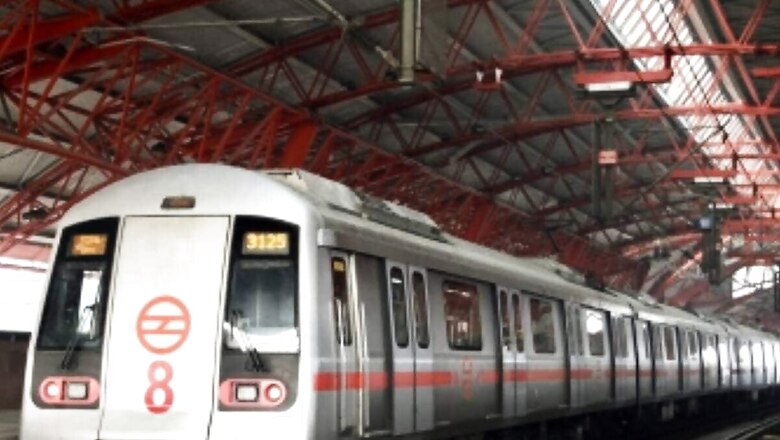
views
More than 74 lakh QR code-based paper tickets have been sold to Delhi Metro commuters following their launch in early May and the sale of tokens has dipped by over 30 percent since then, officials said.
The Delhi Metro Rail Corporation (DMRC) introduced the QR code-based paper ticket system on May 8, describing the development as a move towards a “more transparent and human intervention-free mechanism”.
The DMRC intends to gradually phase out the concept of physical tokens, officials said.
Also Read: Delhi Metro Airport Express Line: How to Buy Ticket on WhatsApp, Step-by-Step Guide Here
However, any future planning will keep in mind the constraints of digital technology and that not all commuters may have access to smartphones, they said.
“The total number of QR code-based paper tickets sold till May 30 is nearly 74,00,854,” a senior official of the DMRC told PTI.
The urban transporter hopes that commuters will gradually start using fewer physical tokens after the launch of this service. But many passengers have complained about technical issues faced at AFC (automatic fare collection) gates while using QR code-based paper tickets. DMRC official said there are “no technical issues” at AFC gates right now.
“Around 50 per cent of AFC gates across the network have been made QR code-compliant. Since the introduction of QR code-based paper tickets, token sales have dropped by about 32 per cent,” the senior official said.
Currently, in addition to tokens, commuters can buy QR code-based paper tickets from metro station counters. The DMRC also issues smart cards for seamless travelling on its network. It has upgraded its AFC gates and customer care counters, to support the new QR code-based feature, a senior official said on May 8.
At the time of its launch, two AFC gates, one each for entry and exit, were upgraded, the DMRC had said.
The Delhi Metro aims to make the AFC gates across the network QR code-compliant by the end of June and upgrade the ticket vending machines for dispensing QR-based paper tickets, officials said.
Delhi Metro, which began its operations in December 2002 with a corridor of just 8.2 km spanning six stations on the Red Line, has grown into a network of 391 km with 286 stations.
Interestingly, a day after the first corridor of the Delhi Metro was launched by then Prime Minister Atal Bihari Vajpayee in December 2002, the rush was so massive that paper tickets had to be issued to handle the flow of passengers, many of whom thronged stations more out of curiosity than the need to commute.
This was besides tokens and smart cards, issued on the inaugural day of its passenger service on December 25, 2002.
In the wake of the COVID-19 pandemic, Delhi Metro had planned to phase out tokens to minimize physical contact while travelling.
A conventional Delhi Metro token has ‘Delhi Metro’ in English and Hindi, and its logo engraved on one side, and an image of Qutub Minar engraved on the other side, besides a number printed on it. Another set of tokens carries ‘Delhi Metro Rail Corporation’, a number and its logo in crimson red on one side and an image of a metro train on the other with ‘Delhi Metro’ printed in English and Hindi.
A senior DMRC official said, “These tokens are manufactured in India only. However, the chip procured is outsourced (foreign). A token is made of PVC material”.
Asked about the cost of making a token, he said, “It costs around Rs 16. The production cost of a QR-code-based paper ticket is very nominal compared to that of a token.” The concept of issuing tokens will be gradually phased out with the introduction of these more transparent and human intervention-free and cashless mechanisms thereby facilitating more convenient, seamless, time-saving and error-fee travel, the DMRC said in a statement on May 8.
Passengers will be allowed to enter the metro network within 60 minutes from the time of the issuance of such a ticket. If a passenger fails to enter the system through the ticket within 60 minutes, the ticket will become invalid, the DMRC said.


















Comments
0 comment